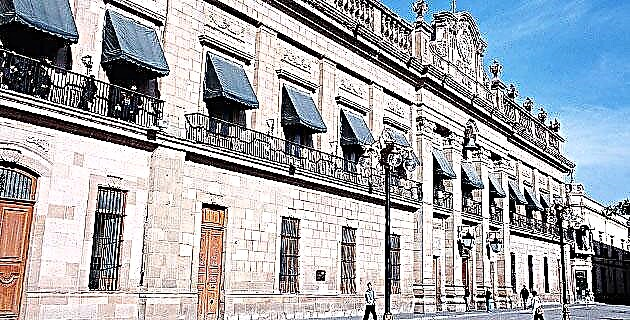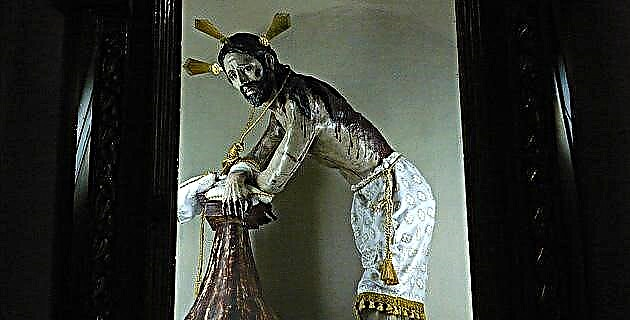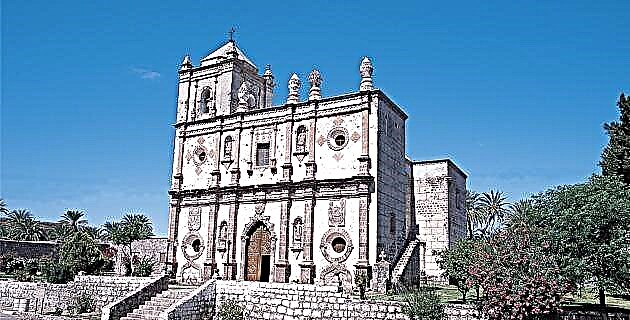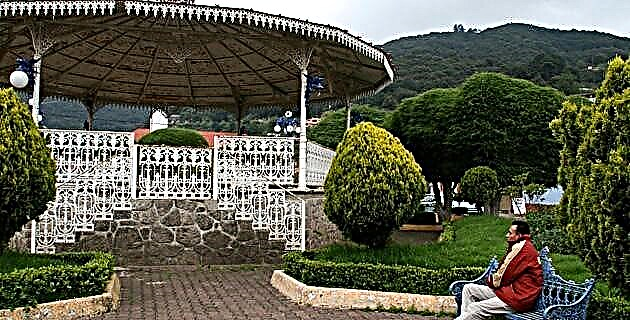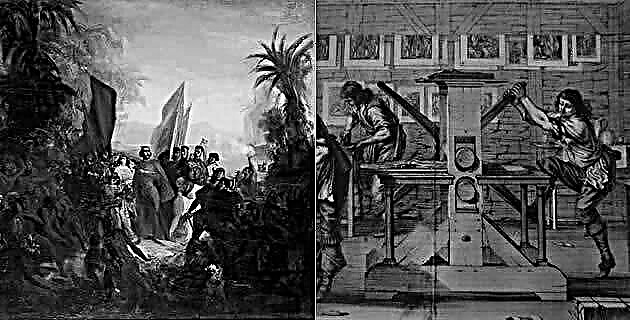
Since the appearance of man, different events have marked each stage under his belt, and each of these have given name or distinguished to certain historical periods. These are the invention of the printing press and the discovery of America that represented exciting milestones in the cultural and spiritual history of the West.
It is true that they were neither the works of a single man nor were they made in a single day, but the union of both events gave rise to a new illustration that significantly influenced the development of Mexican culture. Once the conquest of Tenochtitlan was completed, the missionaries did not rest until they established Western culture in New Spain.
They began their task with evangelization: some tried to teach through mnemonic resources, others through language, for which they associated Latin words with the hieroglyphic representation of the closest Nahuatl sound. For example: pater for pantli, noster for nuchtli and so on. In this way a new language and a new thought were introduced into the indigenous world.
But the continuous occupation of evangelizing the infidels, teaching and administering the sacraments, as well as establishing a new society, caused the friars to need natives to help them; the indigenous elite was chosen to serve as an intermediary between the conqueror and the Indians, and began to be instructed for that purpose. These reasons led to the creation of schools where nobles began to be educated in European culture, which in turn forced the use, consultation of books and the formation of libraries that undoubtedly had incunabula, that is, elaborated printed books with mobile characters very similar to medieval manuscripts (incunabulum comes from the Latin word incunnabula, which means cradle).
The first school founded in New Spain was that of San José de los Naturales in 1527. Here, select groups of indigenous noblemen were taught Christian doctrine, song, writing, various trades and Latin, but not the classical but the liturgical, in order to help in religious services. and the latter made it possible to find in their libraries incunabula related to topics such as sermonaries, books for doctrine, for the preparation of mass and hymnbooks.
The excellent results obtained gave way to the emergence of the Colegio de Santa Cruz de Tlatelolco, which opened its doors in 1536 and whose curriculum included Latin, rhetoric, philosophy, medicine and theology. In this establishment the incunabula were also used, because through their revision and the meticulous analysis that the Latinist Indians made of them, as they are often called, they supported the friars in the writing of grammars, dictionaries and sermonaries in indigenous languages, following the same structure of the incunabula. Such a similarity can be seen in the grammars or in the Libellus de medicinalius indiarum herbis, written in Nahuatl by Martín de la Cruz and translated into Latin by Badiano, which follows the same plant description scheme as that of Messue's Opera medicinalia (1479), with which it can be affirmed that the incunabula were the bridge traveled by the New Hispanics to have direct access to the culture of the old world.
The progress of the indigenous people in the different subjects taught continued to be amazing. This fact accelerated the opening of the Real y Pontilicia University of Mexico (1533) as a real necessity; and at the same time it symbolized the implantation of European society and the stabilization of its culture, since the faculties of Art, Law, Medicine and Theology functioned in the new house of studies. The printing press had already arrived in New Spain (1539) and the circulation of the book began to increase, but the incunabula were still being consulted in the different disciplines, since the intellectual tradition and the Renaissance innovations that are found in them made them essential sources of query. To understand it, it is enough to see what was studied in each faculty; For example, in the Arts where, among other things, grammar and rhetoric were taught - which were taught in order to provide the necessary instruments for preaching - was based on the Prayers of Cicero, the Institutions of Quintilian , the Christian speakers and the precepts of Donato. These texts were used for both the Latin and Greek languages, as well as theological and Sacred Scripture resources; Hence, in incunabula editions Urbano's Institutions of Greek grammar (1497), Valla's treatise on orthography (1497), Greek grammar (1497), Tortelius's grammatical comments on Greek spelling and dictions (1484) are found in incunabula editions. , The grammatical elements of Peroto (1480) and on the properties of the words of May edited in 1485.
As for rhetoric, in addition to the works of Cicero (1495) and Quintilian (1498), there are, among Christian orators, those of Saint Augustine (1495), those of Saint John Chrysostom (1495) and those of Saint Jerome (1483 and 1496), as well as exercise or practice books, among which are: The declamation either for a philosopher or a doctor from Beroaldo (149 /), The prayers, letters and poems for a laudatory speech by Pedro de Cara (1495), Macinelo's works containing Poems of flowers, figures and poetry, Comments to the rhetoric of Cicero and Quintilian and to the grammar of Donato (1498). There are also vocabularies and dictionaries such as La peregrina by Bonifacio García (1498). The etymologies of San Isidoro de Sevilla (1483) and The Greek lexicon of Suidas from the year 1499.
NOVOHISPANAS WORKS UNDER THE INFLUENCE OF THE INCUNABLES
But the incunabula not only served as a consultation but also allowed the production of New Spanish works such as literary contests that were full of Latin and Christian models; the formal speeches delivered at the festivities and solemn functions that were celebrated during the school year o The treatise on Christian rhetoric by Diego de Valadés whose objective was not theoretical but practical: to train speakers, “but Christians so that they would be voices of God, instruments of goodness and criers of Christ ”, for which the works of Saint Augustine and Saint John Chrysostom, among others, were used. Thus, Valadés' work was part of Christian oratory in New Spain, which changed in 1572 with the arrival of the Jesuits. These, with their new method, the Ratio studiorum, their combination of memorization and exercises, achieved through learning and imitation of the authors, expert students in rhetoric. The learning covered prose and poetry, subjects in which a detailed theory of genres was included, supported by classical authors such as Virgilio, Cátulo (1493), Seneca (1471, 1492, 1494), Sidonio de Apolinar (1498), Juvenal (1474) and Marcial (1495), who for a long time influenced the prose and poetry of New Spain. This is how it is seen in Sor Juana Inés de la Cruz, in her famous verses: Foolish men who accuse / the woman without reason, / without seeing that you are the occasion / of the same thing that you blame.
To what Ovid had already written in this couplet: You, angry man, call me an adulteress / forgetting that you are the cause of this crime!
In the same way is the epigram VIII, 24 of Marcial: Who builds sacred statues of gold or marble / does not make gods; (but) the one who begs (them).
To what Sor Juana Inés says in her 1690 sonnet about beautiful women:… because you think that, rather than being beautiful / it is a deity to be asked.
Other citations from different authors could be selected. However, this warrants further work, since the culture of New Spain not only used the content of the incunabula in grammar, rhetoric or poetry but also in other areas such as science, philosophy and history. To demonstrate this, it would be enough to quote Carlos de Sigüenza y Góngora, owner of one of the most important libraries in New Spain, in which there were also incunabula that have his signature and multiple marginal comments, which helped and strongly influenced his jobs. Readings such as the one on Vitruvian Architecture (1497) are noticeable when he designs and explains the triumphal arch erected in 1680 to welcome the new viceroy, the Marquis de la Laguna, and which Brading described "as a great 30-meter wooden structure high and 17 wide, so it complied with the architectural rules ". Likewise, it is known that this arch was overloaded with statues and inscriptions, usually full of symbolism expressed with phrases and emblems. In the latter it was common to use the symbolic doctrine inspired by classical works (Greek and Roman), Egyptian monuments and hieroglyphs, as well as the hermeneutics possibly learned from the Corpus hermeticum (1493) and the works of Kircher, which also predominated in his Theater of Political Virtues. Such influences emerged when describing the affinity of Mexican idolatry with the Egyptian and the remarkable similarity between their temples, pyramids, clothes and calendars, with which he tried to give the Mexican past a very fashionable Egyptian foundation in his time.
On the other hand, it should be noted that Sigüenza as an advisor to the Count of Gálvez was summoned to the palace to resolve the floods in the city, which surely forced him to read or revise the book On the aqueducts of Frontonius (1497). Sigüenza was also a polygraph interested both in the movements of the heavens and in the events of the past and he reflected his knowledge in his Libra astronomica et philosophica where he demonstrates his mastery on the subject, which he learned from the text Ancient astronomy writers of 1499 that he quotes repeatedly.
Finally, we will talk about an area or faculty in which it obviously had to resort to the incunabula to provide a foundation. This is the Law, closely linked with philosophy and theology.
It is known that in Law both the Corpus iuris civilis of Justinian and the Corpus iuris canonici were studied, since in New Spain there were no laws of their own but those that governed Spain had to be adopted. This legal transposition resulted in a series of misinterpretations in its application; To demonstrate this, it will be enough to talk briefly about slavery, for some it is permissible because before the arrival of the Spaniards there were already slaves in America. Such was the understanding of the laws that indigenous people could also be considered as war captives, thereby losing their rights. and a quote from the book Corpus iuris civil, in this regard says: "and for this reason they could be called slaves, because the emperors order the sale of captives, therefore (the masters) tend to keep them and not kill them." Juan de Zumárraga refuted such an interpretation that it was inadmissible, since “there was neither law nor reason-… whereby (these) could become slaves, nor (in) Christianity… (which) they were tyrannical (they went) against the natural law and of Christ that says: "by natural right all men are born free from the beginning."
All these difficulties made it necessary to review the Spanish laws and create their own for New Spain, hence the emergence of De Indiarum iure de Solórzano and Pereira and the Cedulario de Puga or the Laws of the Indies. The new approaches to laws were based on the Habeas iuris civilis and the canonici, as well as a multitude of commentaries used by scholars and students such as the Commentaries on the Habeas iuris canonici by Ubaldo (1495), Councils of Juan and Gaspar Calderino (1491), Treatise on the dowry and constitution of the dowry and privileges (1491) or On the usury of Plataea (1492).
From what we have seen so far, we can conclude that the incunabula were the literary sources used both for evangelization and for the intellectual and social development of New Spain. It is possible to affirm, then, that their importance lies not only in that they are the first printed books in the world but also because they are the origin of our Western culture. That is why we should be proud of being the country that has the largest collection of this material in all of Latin America, because without books there can be no history, literature or science.
Source: Mexico in Time No. 29 March-April 1999


